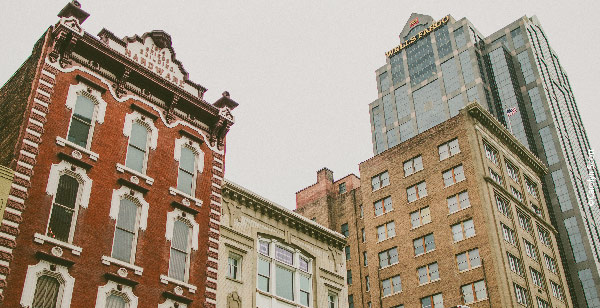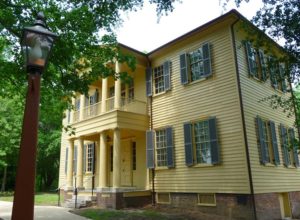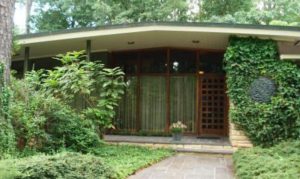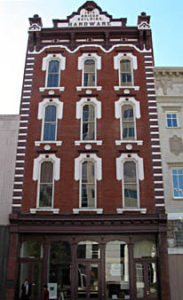~By Clodagh Bastian
Architecture tells a story about the time and place and community that creates it. It serves as a living document to our progress, and it gives us a common identity.
An assemblage of buildings reflect Raleigh’s voyage from its 1792 founding as the capital city to life today. From the 18th century Mordecai House to the 1930s Nehi Bottling Company to mid-century modern examples like the Owen and Dorothy Smith House, historic structures bear witness to the city’s progress and the life of its communities.
As Raleigh continues to top ‘best of’ lists and welcome a steady flow of newcomers, infill and new development are increasingly supplanting older architectural structures. With ongoing growth, discussions of how to best balance architectural heritage and character with needed expansion continues.
Raleigh’s main body for historic preservation is the Raleigh Historic Development Commission (RHDC). The successor to the city’s first historic preservation committee established by Council in 1961, the RHDC fulfills several roles in developing and administering historic protection. Most concretely for architectural preservation, it recognizes two main designations: historic districts and individual landmarks.
Historic Overlay Districts, “distinctive residential or commercial areas of singular historical flair”, aim to preserve the architectural character of a neighborhood or the historical significance of a community. Raleigh has seven historically protected neighborhoods with an eighth, Oberlin Village, currently making its way through the application process.
Individual landmarks must be at least fifty years old to be classified as historic and may be preserved for their architectural representativeness or as a marker for a significant historic event or person. In either case, they must retain enough of their architectural integrity to represent their period of significance. In other words, they must look close to how they did in the period they represent or when they hosted a significant occurrence or person. The city currently has 168 such landmarks.
In general, the protection provided historic districts or landmarks is that changes to the structures’ exterior must be appropriate to their historic integrity. This can apply to masonry, color, additions, and new builds among other things. While State statues prohibit municipalities from blocking the modification or tear-down of structures, local historic designation can delay changes or demolition for 365 days. The idea is to give property owners time to explore alternatives to tear-down. The delay also acts as a deterrent to turnover developers reluctant to sit on a property for a year.
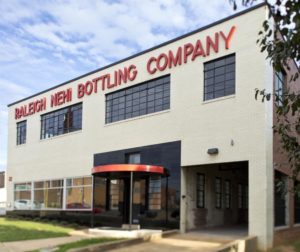
Nehi Building
So why would neighborhoods or individuals choose to seek historic protection, given these restrictions? Besides wanting to preserve unique buildings for their appearance or historical significance, many Raleigh communities have seen the character of their neighborhoods undermined through infill. New construction tends to be bigger and more generic than older architectural stock, and with more and more infill, the original distinctiveness of older neighborhoods is disappearing.
Preservation also often makes sense from a financial standpoint. Property owners get tax credits for maintaining their building’s historic character, and historic zoning has been shown to have a stabilizing influence on Raleigh neighborhoods overall. Property values are affected positively, as security that neighborhood character will not be undermined fosters reinvestment over time.
In the bigger picture, historic neighborhoods reflect positively on the City and help planning, according to Ken Bowers, Raleigh’s Director of City Planning: “A larger city like Raleigh has to appeal to a lot of different types of people,” he says, “historic districts provide an option that a certain segment of the population finds very appealing. As points of civic pride, they are part of the overall image of the city and contribute to its overall success.”
Given Raleigh’s high growth rate and the need to build density, the question begs whether historic restriction could stifle smart growth, but Bowers believes that concern is mostly unwarranted. As historic districts are usually mapped for relatively low density at six to ten units per acre, they present few obstacles to plans for the growing city.
Preservation also ties into the Raleigh brand in many ways. “Historic districts have a positive impact on the character and attractiveness of the city”, says Martha Lauer, Senior City Planner. “Articles on ‘great places’ always talk about authenticity: what does this place have to offer that nowhere else has to offer?” Typically, it’s unique businesses that are in old buildings and architecture that connects the city’s past to the present. Those features positively affect an authentic experience of Raleigh, according to Lauer. “If you go to a mall with a Target say in Briar Creek, you could transport yourself to a very similar mall in Greensborough or anywhere else in the country, but if you’re standing in front of Briggs Hardware on Fayetteville Street, you have a very specific sense of place. The texture and the fabric give you a sense of rootedness”.
As Raleigh grows and accommodates new ideas and new structures, we are seeing a unique juxtaposition of old and new. All the ‘best of’ lists talk about innovation and vibrant energy. Within that energy is the energy of the past and the rootedness Raleigh’s history provides the present. Sarah David, RHDC Chair, notes: “Having our old buildings helps us identify place and gives us shared community. You can learn or read all you want about history, but buildings are the only documents you can go into. They put history in perspective”.
In Raleigh, we are lucky to have that perspective and connection to our roots as we create new history together.
MANY THANKS to Ken Bowers, Don Davis, Susan David, Martha Lauer, and Ruth Little for contributing their considerable knowledge and insight for this article.
Part four: Visual tour of some of SouthWestRaleigh’s historic landmarks. Stay tuned!

